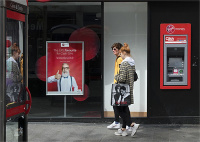
Virgin Money has reported a 2% decrease in mortgage balances in the first half of the year at £56.6 billion, reflecting a “subdued market”.
The lender says that customer demand has improved since the start of the calendar year, with application volumes higher in Q2 compared to the first quarter.
Despite the bank’s mortgage balance figures, Virgin Money said its customer loans remained “stable” at £72.7 billion in H1 and reported lending growth of 5% across its other target lending areas.
Unsecured lending increased 3% to £6.7 billion in the six months to 31 March, driven by 5% growth in credit card lending.
Elsewhere, the lender confirmed the full rollout of its premium broker to 225 mortgage intermediaries, covering 40% of Virgin Money UK applications.
It says the rollout has contributed to a “stronger pipeline” of recommended cases from those brokers.
As part of its strategy update, Virgin Money also confirmed progress in the second phase of the Consumer Duty review ahead of the July implementation date.
Looking forward, the lender continues to anticipate 5 to 10% growth across target lending segments of business and unsecured lending in FY24, as guided at FY23.
Virgin Money agreed to a £2.9 billion takeover from Nationwide in March in a deal, which will create the second-largest mortgage provider in the UK.
In light of the deal, Virgin Money has cancelled its share buyback programme and does not intend to announce any further share buybacks or dividends
As a result of these factors, the lender says it expects the statutory return on tangible equity to be lower in H2 compared to H1.
A shareholders meeting will take place on 22 May to approve the scheme.
Virgin Money chief executive David Duffy says: “Over the first six months, we have continued to deliver on our strategic ambitions in line with expectations. While we expect there to be headwinds through the second half of the year, we remain well placed to deliver growth in our target segments.”



